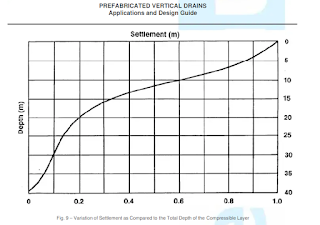THE VERTICAL WICK DRAIN PRINCIPLE AND ITS APPLICATIONS
When construction work such as road and airfield embankments, bridge approached, dykes, land reclamation or buildings on soft compressible soils, significant settlements may occur due to on solidation of these soils under the superimposed loads. To avoid serious and potentially expensive problems due to such settlements, it is desirable to cause this consolidation to occur at the outset of project, and in the shortest possible time – during the construction period.
Consolidation of compressible soils involves removal of pore water from the soil. This is traditionally done by applying a surcharge of pre-load to the construction area to “squeeze” the water out. Unfortunately, compressible soils are also often low-permeability soils (peats, silts, clays), and as such the water is not easily squeezed out.To facilitate the de-watering process, it is necessary to install vertical drains into the soil, to provide a conduit for the water flow.
Traditionally, these drains took the form of sand columns – holes drilled into the low-permeability soil and filled with higher permeability sand. But these were relatively expensive, and inconvenient to place at close spacing. PVD's are a very economical replacement for sand drains. They are relatively inexpensive, provide higher conductivity (up to 30 times more effective than a 300 mm diameter sand drain) and can easy be installed at close spacing, thus shortening the path of the pore water in the impermeable soil and expediting the consolidation process.























